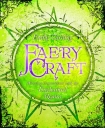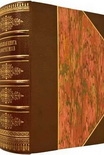Faery Craft: Weaving Connections with the Enchanted Realm Carding, Emily (first color ebook reader txt) 📖

Book online «Faery Craft: Weaving Connections with the Enchanted Realm Carding, Emily (first color ebook reader txt) 📖». Author Carding, Emily
The sacred number three can also be found within the mathematical pattern of this star, as when it is drawn point to point, every third point connects. This shows that though its use as a sacred symbol within Faery traditions is extremely recent, the relevance is inherent within its very structure.
Pentagram
The five-pointed star, or pentagram, has become very recognisable as a symbol of Pagan beliefs, most particularly Wicca-based paths. Within this context it represents the balance and power of the five elements of earth, air, fire, water, and spirit, and it is used for both invoking and banishing the powers of these elements, as well as for protection. However this symbol has been in use for many thousands of years and by many different cultures.
The Pythagoreans, to whom it symbolised mathematical perfection, used the pentagram as a secret symbol by which to identify each other. They identified the five points of the star with the five elements, which continues to this day. Though many Christians may look down upon this symbol due to its overuse in kitschy horror flicks as well as its association with Pagan and magickal paths, early Christians actually saw the pentagram as symbolic of the five wounds of Christ and a sacred symbol of universal truth.
Though the earliest evidence of this symbol can be found in ancient Babylonian pottery fragments from 3500 bce, in truth this symbol has been with us since the evolution of life. The mathematical pattern it encapsulates is seen throughout the natural world—in flowers, in the core of an apple, even in our own bodies. Of course the innate relationship with the elements and perfection in nature gives this symbol great relevance in Faery Craft, as does its effectiveness as a symbol of protection.
One more fascinating detail is its use in the Grimoire tradition for summoning Faery beings. The grimoire magicians would use very similar methods to summon Faery beings (normally to help in the hunt for hidden treasure) as they would for angels and demons, only instead of a constraining triangle outside the circle, they would use a pentagram. As grimoire expert David Rankine notes in Grimoires, Fairies and Treasure:
Even then the magicians were sensible enough not to try and apply the same rules to fairies as to demons, recognizing that fairies were already far closer to the physical realm and able to manifest at will rather than needing to be summoned, as was the case for many other spiritual creatures.
Triskele
The triskele or triskelion is an ancient Celtic symbol that can be seen to have many meanings within its obvious triple nature. The name of the symbol translates as “three legged,” and indeed, in its form as the Manx flag, the spirals do take on the appearance of legs in motion. We may think of it, then, as a symbol of cycles that never end—the journey of life, death, and rebirth that is constantly in motion. The three spiral arms of the triskele may also be seen to represent the past, present, and future, with the centre showing where we stand in connected awareness of all that is, has been, and will be.
The number three is of great magickal significance and can be seen repeatedly and in many forms in Faery lore. We see it in triple-formed goddesses such as the Morrigan, Hekate, and the Fates themselves; in the triple crossroads, the paths leading to hell, heaven, and elfland; in the traditional three wishes of fairy tales; in the three guesses to the riddle; in the three colours of red, black, and white; in the three realms of land, sea, and sky; and even in the elements of earth, air, and water, with fire being the divine spark that dwells within.
This ancient symbol resembles the patterns of water as they flow around obstacles in a river or the ripples that are sent out when a stone is thrown into a pond. Indeed, spirals can be found throughout nature—from the DNA that carries seemingly impossible amounts of coded information, to the largest galaxy. As above, so below. The world of nature holds much wisdom, and that is reflected in this symbol. We should always remember that we stand in the centre of our own world, sending out ripples of consequence with every action.
Equal-Armed Cross
The equal-armed cross within a circle is the alchemical symbol for earth and is used within Qabalah to represent the material realm of Malkuth. As a symbol for earth, its significance to Faery Craft is obvious, not the least because this symbol actually appears naturally on the Faery stone known as staurolite.
We can also see this symbol as representing the sacred crossroads between the worlds. In Celtic myth and folklore there are many tales of humans and Faery beings meeting at crossroads, such as the Cornish tale about Cherry of Zennor and the famous Scottish ballad about Thomas the Rhymer. It can also be seen as the meeting place of the paths leading to the four cities of Falias, Gorias, Murias, and Finias, which, according to the eleventh-century collection of ancient Irish folklore called The Book of Invasions, are the cities from which the godlike Tuatha de Danann originated. These four cities are connected to the four elements of earth, air, fire, and water and the sacred hallows of the Tuatha de Danann.
This symbol can also be seen to represent balance between the elements and the position of the self as being always in the centre of the directions, protected by the circle. If you think of the symbol





Comments (0)